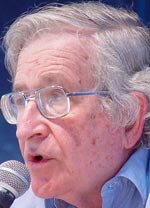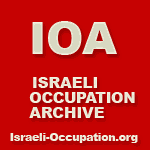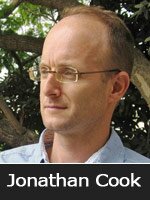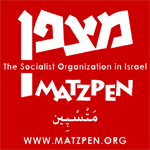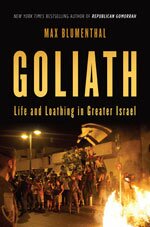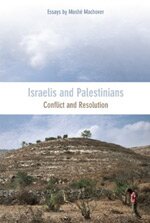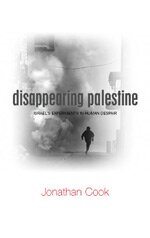Jamal Zahalka: “Our problem is not that we are terrorists but rather that we are democrats in an environment that does not believe in democracy… We are tired of apologising for demanding full equality for all Israeli citizens. We’re tired of sitting in the dock for being patriotic Palestinians.”
Israel-Palestine
Last week, in one of the first actions of its kind, activists released the names of Israeli soldiers involved in the killing of a Palestinian protester. Mustafa Tamimi, a 28 year-old demonstrator from the village of Nabi Saleh, was killed when a soldier shot a tear gas canister at his face in December last year.
On Sunday, Israeli Foreign Minister Avigdor Lieberman stepped down from his post following charges arising from a 13-year investigation against him. 972 Magazine’s Noam Sheizaf analyses Lieberman’s decision and what it will mean for Likud Beiteinu, the new joint list of Israeli Prime Minister Benjamin Netanyahu and Lieberman’s party Yisrael Beiteinu.
International NGOs are working extensively in the Palestinian villages, towns and cities of Areas A and B, whilst Palestinians in Area C (including most of the Jordan Valley) are systematically denied access to water, land, education, health care, or electricity. As these NGOs work within the military laws imposed on the West Bank by the occupation forces, Jordan Valley Solidarity has been analysing the extent to which the work of the NGOs benefits local Palestinian communities, and to what extent it benefits the occupation they are living under.
Haneen Zoabi: “Legally, they have no case. I never imagined myself to be in the middle of a war like this. I don’t think they will disqualify me. If so, and if Balad is disqualified, there will be no election – the Arabs will not vote.”
Since late October, major defence drills, including manoeuvres involving heavy tanks as well as air and missile training, have been taking place throughout the Jordan Valley as part of the joint US-Israeli exercise ‘Austere Challenge 2012,’ especially in the Valley’s northern areas illegally declared as ‘firing zones.’
[L]et’s face it. It isn’t that we don’t know what happened in 1947-1948. It’s that we’ve chosen not to see or hear anything that jars our thinking on the subject. Certain words and ideas have remained taboo, certain questions have been sidelined as suspect and certain histories – ours and theirs – have been excised, the better to educate us to numbness and indifference. The result is that we prefer to think of Israeli-Arab wars as instances of the much lamented ‘clashes of civilization’ that pit our civilized allies against the violence-prone ‘other,’ As long as our side wins, there is no need to look into the face of the ‘enemy,’ or to ask ourselves why and why again? Admittedly, doing so risks discovering that ‘they’ are like us, which is as disconcerting as learning that what the ‘experts’ have taught us about our history and theirs is often plain wrong, leaving us to discover that deception can be dangerous.
An uneasy cease-fire has been declared ending Israel’s attack on Gaza, Operation Pillar of Defense. Take this quiz to see how much you know about the situation.
More than 160 people died in the eight-day Gaza war. And though the fighting may have stopped, the dead and the nightmares remain. Survivors and victims’ families say they want revenge.
[Israel’s current “Pillar of Defence” assault on the Gaza Strip] may serve Netanyahu’s hidden agenda: a protracted regional war may provide a smokescreen for a major ethnic cleansing of Palestinians from the territories occupied by Israel since 1967. This is a long-term plan supported by all major Zionist parties. It is designed to resolve the contradiction between the deep-seated Zionist opposition to the creation of a Palestinian sovereign state, however small, in any part of pre-1948 Palestine, and the even greater “demographic peril”, as it is openly described in Israeli public society, of Arab majority in that land.
Three weeks before Israel launched its Operation Pillar of Defense on November 14, 2012 I was part of an academic delegation on a short trip to the Gaza Strip. For the mainstream media, October was a “normal” time, because hardships endured by Gazans are not newsworthy when there are no F-16’s dropping laser-guided smart bombs. That one or two Gazans were killed by Israeli army patrols from one week to the next in October, because they had transgressed the limits of the Israeli siege, went largely unnoticed. But such are the ethical standards of the mainstream media, genuflecting to power and ignoring the oppressed. One way to see through the ideological fog is to experience “normal” conditions from close range. Inside the Gaza Strip in October, we directly witnessed the devastating effects of the sanctions, the siege, the sea blockade and – more fundamentally – the long systematic evisceration that Gaza has suffered over several decades.
The inciting cause of the latest confrontation between Israel and Hamas has little to do with the firing of rockets, whether by Hamas or the other Palestinian factions. The conflict predates the rockets – and even the creation of Hamas – by decades. It is the legacy of Israel’s dispossession of Palestinians in 1948, forcing many of them from their homes in what is now Israel into the tiny Gaza Strip. That original injustice has been compounded by the occupation Israel has not only failed to end but has actually intensified in recent years with its relentless siege of the small strip of territory.
A new documentary by frequent IOA contributor Israeli-Canadian journalist Lia Tarachansky aims to decipher some of the anxiety that accompanies the Israeli debate over the events of 1948.
Upcoming documentary profiles Israeli journalist Lia Tarachansky’s return to the settlement where she grew up, to uncover a buried history and a landscape of denial. The film tells the stories of four veterans of the 1948 war that erased from the Israeli landscape hundreds of Palestinian villages and connects their stories to the modern-day Palestinian dispossession through the occupation and settlements.
Israel’s anti-refugee policy reached a new peak this week when Ha’aretz reported that a group of 20 asylum seekers was being denied entry and was stuck in the fenced area between the Sinai Desert in Egypt and the Israeli border. The group has been sitting outside the fence since last Thursday, without food. The soldiers in the field were given an order to give the refugees “as little water as possible.” On Tuesday night, Israeli activists decided to deliver food they bought to the refugees themselves.
Tzipi Livni: “The national solution for Israel’s Arabs lies elsewhere: in order to maintain a Jewish-Democratic state we must constitute two nation-states with clear red-lines. Once this happens, I will be able to come to the Palestinian citizens of Israel, whom we label Israel’s Arabs, and tell them that their national solution is elsewhere.”
Our beloved Tel Aviv, whose reputation for enlightenment and openness is world renowned, is built in part on ruined Palestinian villages – and refuses to acknowledge it.
The Occupation is the embodiment of disaster for Israel. Greater Israel, the enthusiasm to conquer, rule and colonize in the very heart of a dense Palestinian population, that sweeping wave was fostered in the very bosom of Zionism that sees itself as civilized, secular and socialistic. The term “Greater Israel” germinated not in the Likud or in the yeshivas of national-religious Judaism, rather it was coined at Kibbutz Ein-Harod by poets, writers and intellectuals, nearly all of them from the moderate secular stream.
Yael Berda: “The administrative flexibility, waste of resources and the frequent administrative friction that is part of granting work permits leads to two desired results in the governmental system. It makes the Palestinian civilian population dependent on the administrative system, enabling the system to control, monitor and apply pressure and it preserves the principle of keeping the two populations separate.”
Attorney Hussein Abu Hussein: “This verdict is yet another example of where impunity has prevailed over accountability and fairness. Rachel Corrie was killed while non-violently protesting home demolitions and injustice in Gaza, and today, this court has given its stamp of approval to flawed and illegal practices that failed to protect civilian life.”















